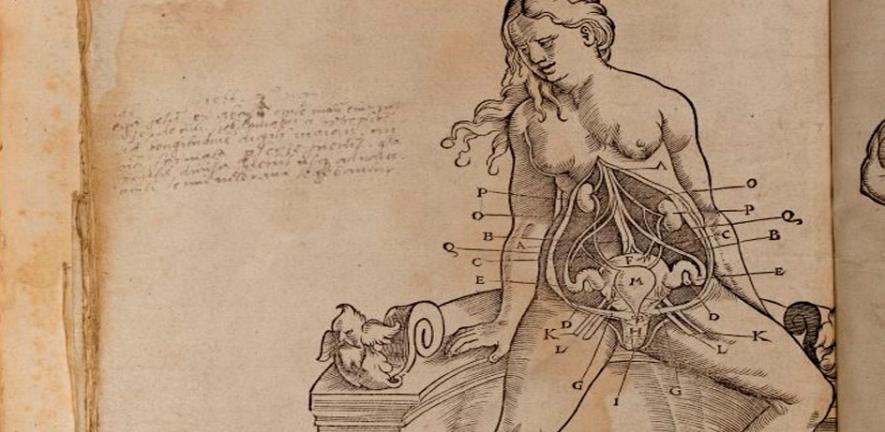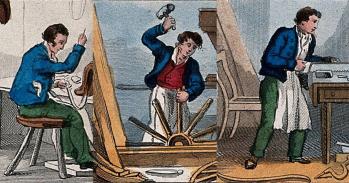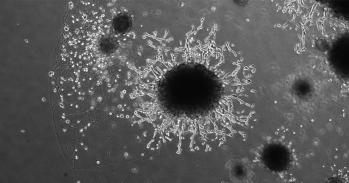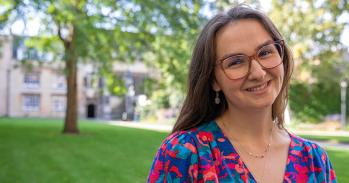
The history of human reproduction – via its communication through the ages – is examined in a ground-breaking exhibition opening this week at Cambridge University Library.
The history of human reproduction – via its communication through the ages – is examined in a ground-breaking exhibition opening this week at Cambridge University Library.
Discussing sex and childbirth in public and private is not new.
Nick Hopwood
Books and Babies brings together a medieval bestiary and an eighteenth-century Anatomy of the Human Gravid Uterus with research notes by IVF pioneer Robert Edwards and a condom packet distributed by Cambridge University Students’ Union.
Edwards’ notes and the embryo culture chamber he used to incubate human embryos are believed to be on public display for the first time.
The free exhibition, part of the major five-year Generation to Reproduction project run by the University and funded by the Wellcome Trust, is the first ever to examine the communication of reproduction throughout thousands of years of history. It opens, free to the public, from Thursday, July 7.
A sixteenth-century pamphlet that exploits monstrous births for religious propaganda will sit alongside a 2009 newspaper story about ‘Octomom’ Nadya Suleman. William Petty’s Political Arithmetick and Thomas Malthus’s Essay on Population will share a case with a commentary on the Nazi sterilization law of 1933 and Paul Ehrlich’s Population Bomb.
Exhibition curator Dr Francis Neary said: “The show is about how people have talked and written about reproduction. We’re interested in the link between communication media and this intimate part of our lives that has also been a big public concern. And we look over an unusually long span of time, from a 2,500-year-old Syrian fertility figure, loaned from the Fitzwilliam Museum, to a recent children’s book introducing the birds and the bees.
“The exhibition traces two sets of major changes. Before reproduction there was generation, a broader view of how all things come into being than the fusion of egg and sperm. Before digital media there were clay figurines, papyrus, parchment, books and journals. Books and Babies is about the interactions, from theories of generation to the rise of population thinking and modern dilemmas about reproductive choice, eugenics and the control of life.”
As well as letters and sketches by Charles Darwin – one reporting his early use of chloroform during a son’s birth – the exhibition features a bestseller which nicely illustrates the continuities that are as much a theme as change.
In 1684, an anonymous hack pasted together excerpts from two earlier texts, one a guide to midwifery, the other a treatise on the secrets of nature, and called it Aristotle’s Masterpiece. Although neither by Aristotle nor a masterpiece, hundreds of editions were printed in Britain and America. Boys pinched it from their mothers, men ogled its saucy secrets and women relied upon its advice. Such was its popularity that it was still on sale in 1930s Soho – its contents largely unaltered, but the contexts in which it was read transformed.
Fellow curator, Dr Nick Hopwood, added: “There have been huge innovations between the invention of writing and the Internet, and we think of reproduction very differently from even a few centuries ago. But discussing sex and childbirth in public and private is not in itself new.
“So while the exhibition highlights the major shifts that produced our world of reproductive debate, it also invites reflection on some perhaps surprising continuities of concern. There are direct links from nineteenth-century evolutionary epics to Stanley Kubrick’s science-fiction film 2001. Extraordinary births still sell papers and moral lessons continue to be drawn.”
This work is licensed under a Creative Commons Licence. If you use this content on your site please link back to this page.





